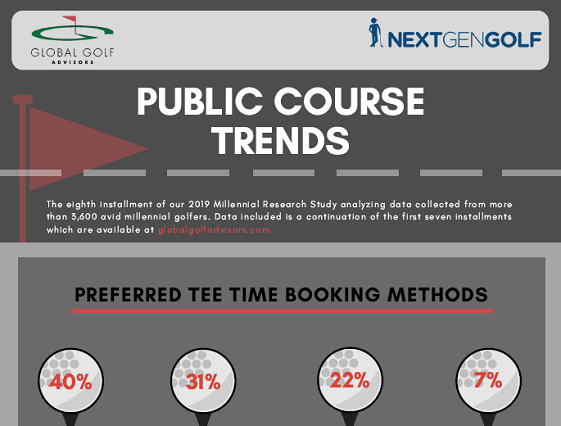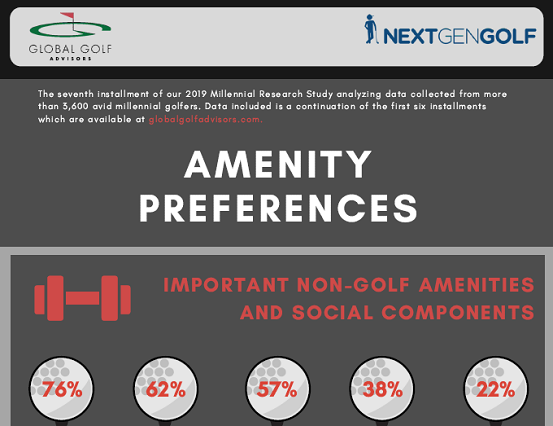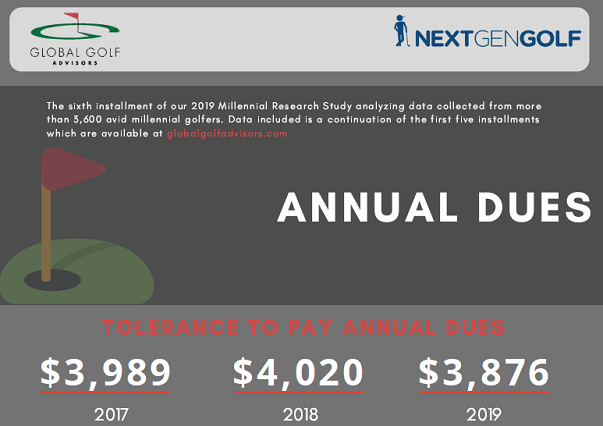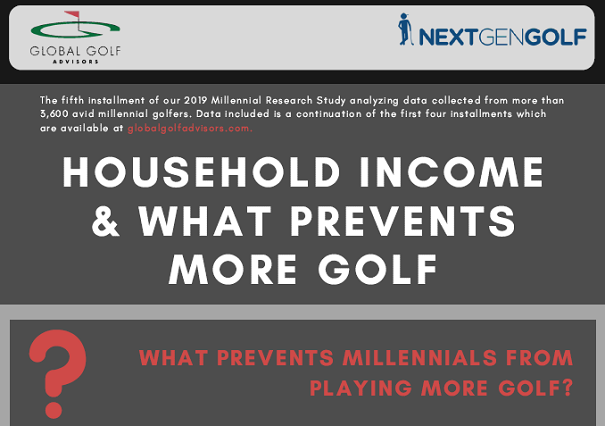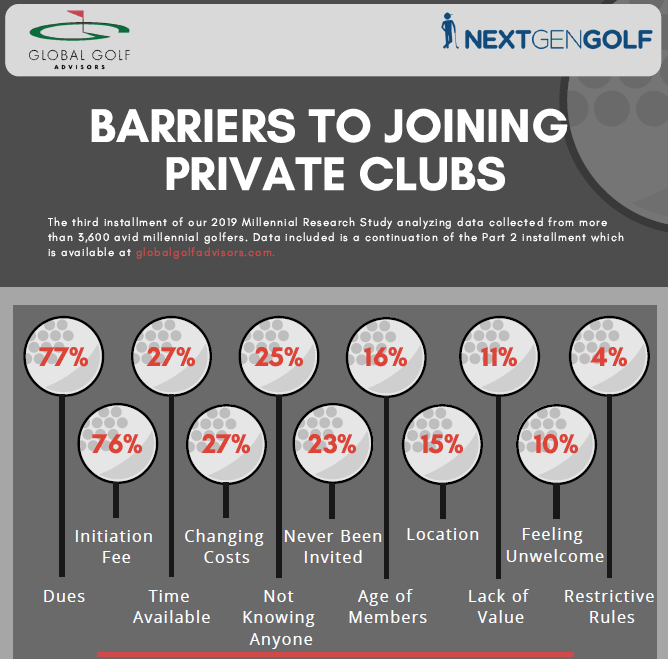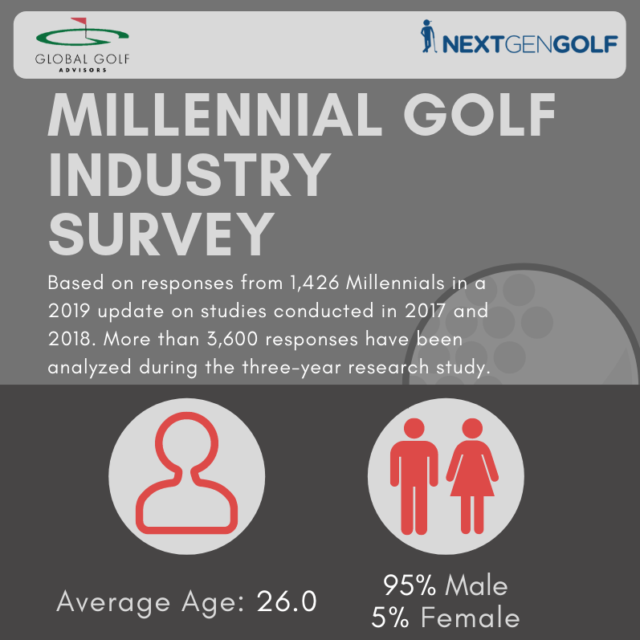On the back of GGA’s largest piece of millennial research to date, Michael Gregory answers your questions, revealing how the findings paint a clear picture of who clubs need to target in order to build the next generation of members and customers.
For 3 years GGA and Nextgengolf have analyzed the behavior and attitudes of golfing millennials. Armed with the findings of this research, GGA have engaged with clubs and resorts on how to connect with this audience. Unfortunately, for many clubs, this generation still proves elusive. However, with the latest round of research now complete, we have the clearest ever picture of the untapped potential of millennials.
Below is a selection of questions that have been posed to me in recent months from managers and board members across North America. The answers may help you dispel millennial myths, consider your club’s actions in appealing to this generation, and, in some small way, future-proof the core of your membership.
What do you know now that you didn’t know before about millennials?
This centers around 3 areas: the trigger point for deciding to join a private club, the influence of family in decision-making, and interest in non-golf amenities.
Trigger point: 72% of millennials move to private club membership as the result of a new job or promotion, making way for more disposable income and leisure dollars.
We already know millennials are a highly cost-conscious group. However, an event relating to their work status which sees them earning more is the most powerful trigger point or motivation for them to decide to join a private club. When does this happen? Last year’s research indicated the ‘sweet spot’ for joining a private club was 33 years of age, and this remains the case.
Family: findings suggest a millennial audience is highly influenced by benefits for the whole family and gaining spousal approval when joining.
Millennials increasingly assess the value of club membership not just in individual terms, but in how their loved ones will benefit too. If club membership becomes a gateway to spending more time with those close to them, this will be key to influencing their decision to join.
Non-golf amenities: interest in non-golf amenities is on the increase, with 76% of respondents stating a desire for fitness pursuits and 71% looking for pool facilities.
This increased desire for non-golfing amenities is significant. More and more, millennials are viewing the value proposition offered by private club membership as a lifestyle choice. They may well have gym or health club memberships elsewhere, but if a private club offers those facilities too along with its numerous other attributes, it is more effectively positioned to win out in the millennial mind.
Do I need to create a millennial membership or reduce the cost of membership to appeal to this group?
2019’s findings reaffirm the issue of cost for millennials. Both dues and initiation fees continue to be barriers, and it is a reality that clubs will need to compete on price to appeal to this group (how much depends on the club’s location and market position).
But there’s also a bigger picture at play. While price is (and likely always will be) important, the best performing clubs are focused on creating an experience that enhances millennials lifestyles and develops a sense of emotional connection and belonging. An experience that also enhances the lifestyles of their family strengthens this connection, elevates the value proposition and paves the way for greater price elasticity.
Are there clubs out there who are successful in attracting and retaining millennial members? What can I learn from them?
Most definitely. We’re witnessing clubs roll out a number of effective initiatives to attract and integrate millennial members.
My advice?
- Welcome millennials into the governance structure. They want a voice and the overall membership benefits from fresh, younger ideas at the committee level.
- Encourage them to get involved with events. Some older members may be reluctant at first, but, actually, most will love the injection of youth into events.
- Find ways to get the family involved, even if you only offer golf. Socialization is key, as is spousal approval. Need some inspiration?
- Offer periodic child care (for a fee) so couples can enjoy time together at the club
- Host live music outdoors where young couples can socialize
- Increase service levels when spouses are on property (call them by name, remember their drink, be ready for them)
Any interesting developments or emerging trends from this year’s findings?
We know that millennials are a time-strapped generation. Between work and family life they don’t have a great deal of time left to dedicate to leisure interests. It’s for that reason, in recent years, we’ve witnessed the convergence of leisure and family, with more and more clubs becoming family-friendly and a place for families to spend time together.
Now, we’re starting to see work come into the equation, which is no great surprise as 74% of respondents stated work commitments prevent them from playing more. Clubs are capitalizing on the trend by creating an environment that makes the transition from work to golf and club easier. This could involve investing in modern business facilities with shared workstations, calling booths and private meeting rooms to accommodate their needs.
As there appears to be no letup in time pressures on this generation, we’d expect to see an increasingly closer union between work, family and leisure time.
Is your club in need of a shift in focus to appeal to a wider and younger audience of prospective members?
Connect with Michael Gregory to see how GGA’s expertise and insights
in this area can help your club.
Useful links:
Millennial Golf Industry Survey 2019
The Truth About Millennial Golfers 2018
The Truth About Millennial Golfers 2017
